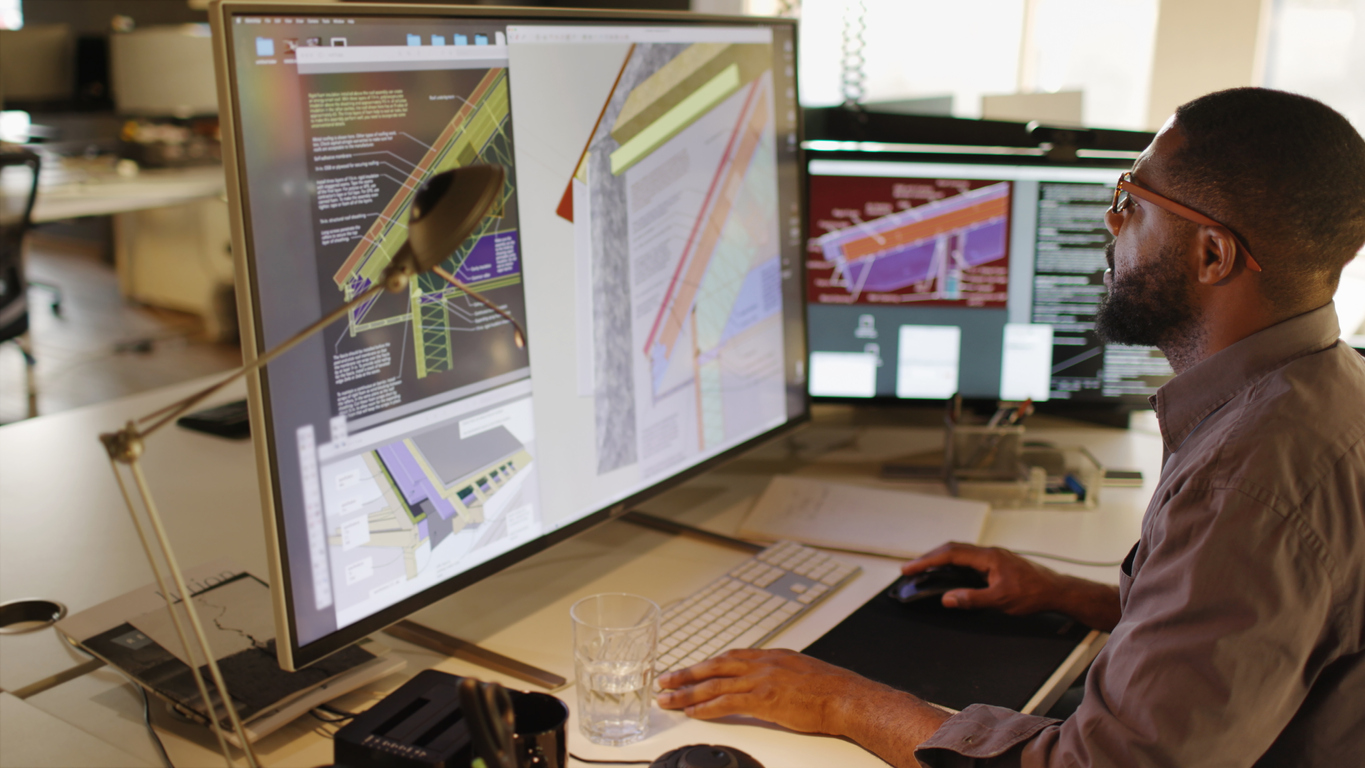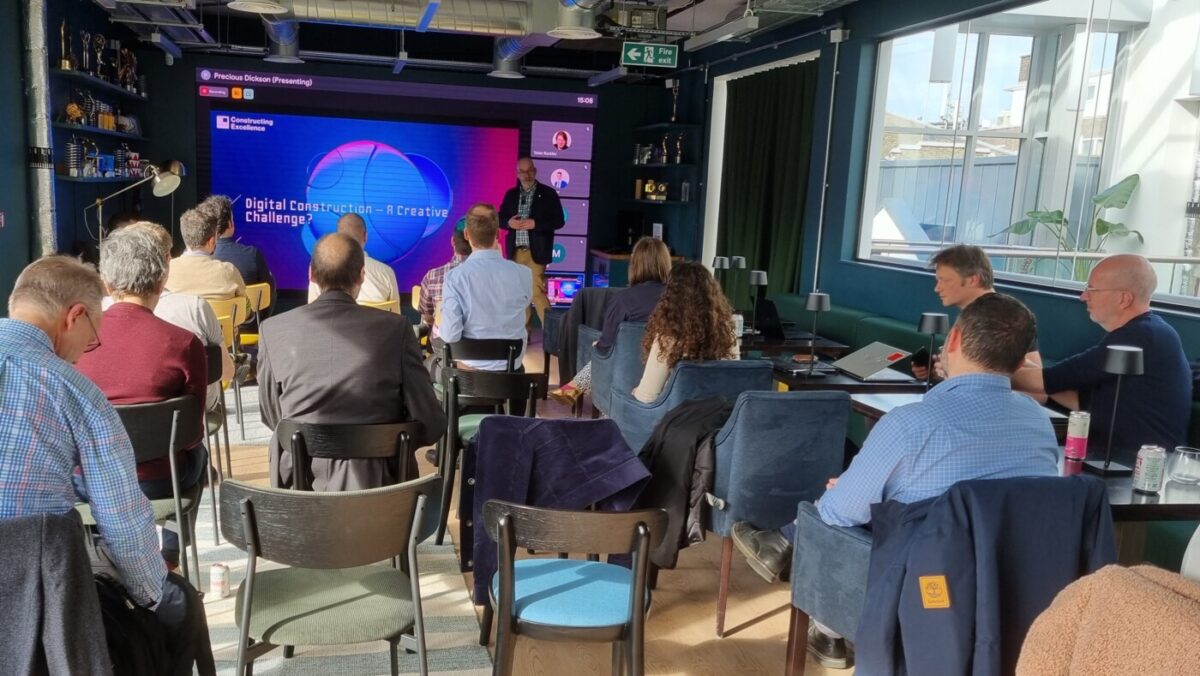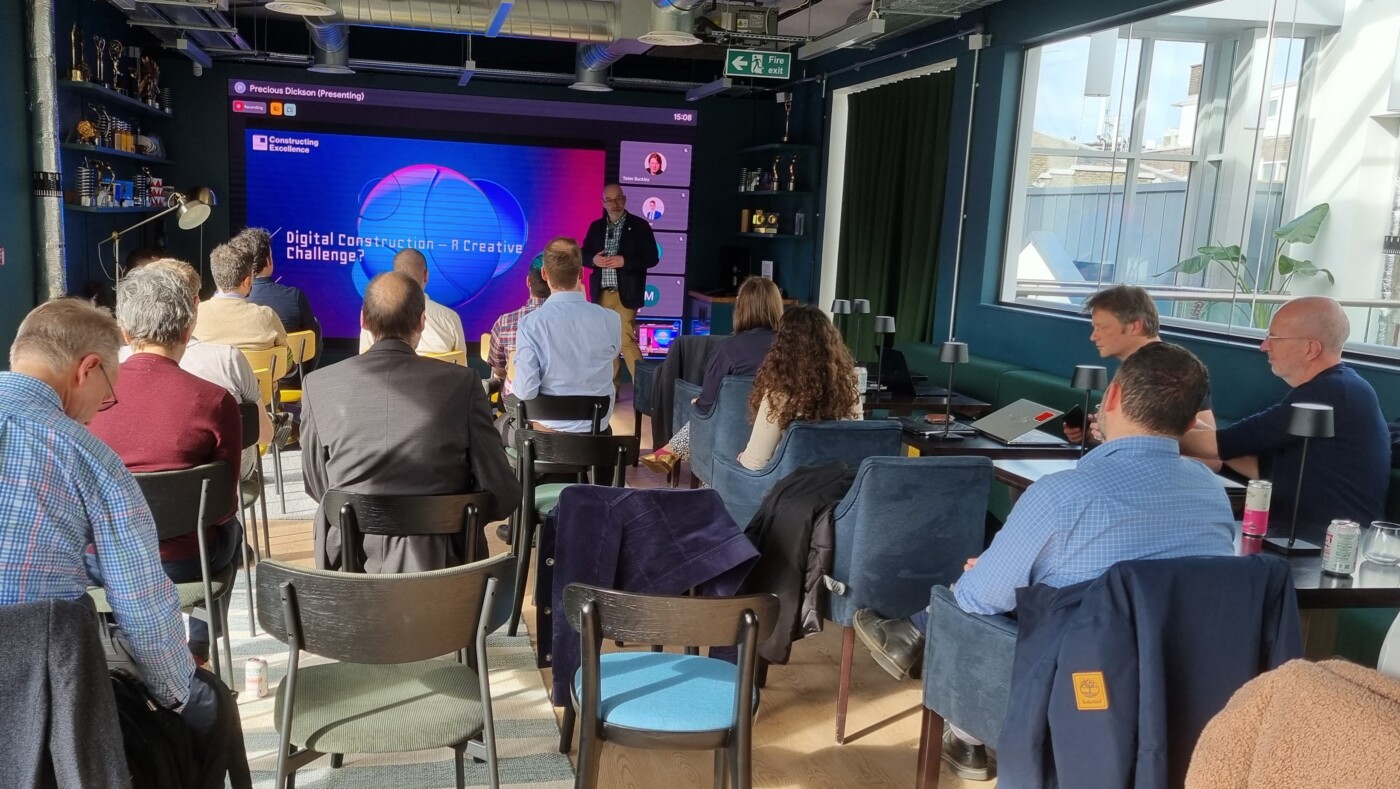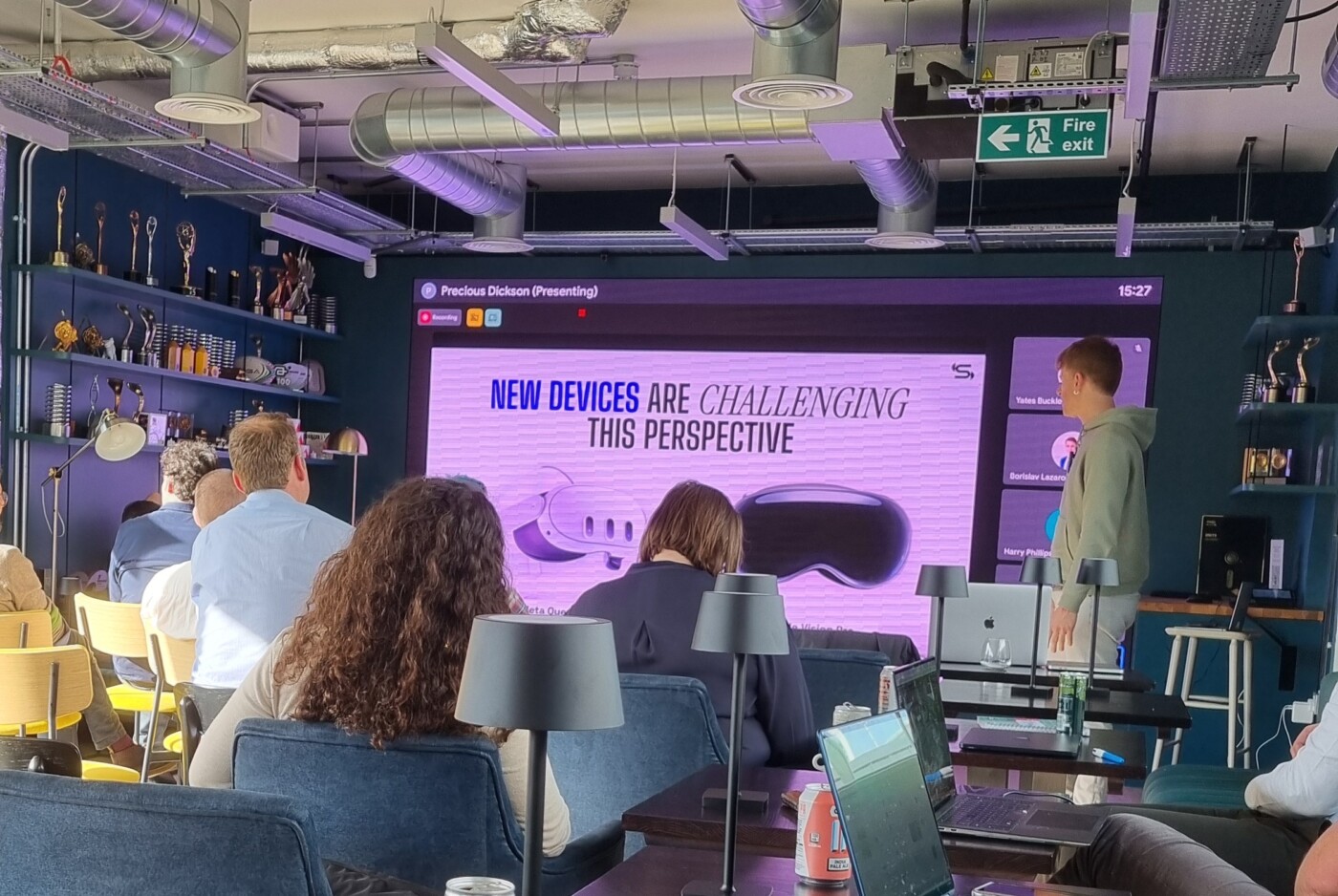On Thursday 21st March, our Digital By Default group were fortunate to attend a workshop hosted by Unit 9, a global innovation partner built from a team of skilled strategists, innovation architects, product designers, software engineers, gaming experts, art directors, producers and film directors. They look to use tomorrow’s technology to create high-end experiences today, delivering value that’s never been created before.
The workshop explored:
- What role can the Creative Industries play in digital construction?
- How can construction benefit from the advanced techniques and tools developed for gaming and film?
Spatial Computing
What is it?
We first heard from Unit 9’s Spatial Design Team about ‘spatial computing’, a form of mixed reality that has become increasingly popular due to well-known technology companies entering into the market, i.e. Apple’s Vision Pro, Meta’s VR headset, Google’s ARCore.
Spatial computing is the convergence of many technologies, not just a headset, for example AI & computer vision, hardware, real-time, geospatial technology, and Unit 9 propose that it is the next decade’s medium, the future of how we interact with information. They have worked with the aforementioned organisations to implement spatial computing technologies and are investigating real world applications for these resources.

The Technology
The Spatial Design Team took the group through some of the features of the Apple Vision Pro, which aims to deliver a truly luxurious and smooth, intuitive experience, promoting a way of experiencing virtual content that is more high quality.
Features
- High end premium design, outward display, solo knit band, aluminium alloy frame.
- Intuitive natural interactions: hand tracking, eye tracking, voice input.
- Captivating sensory immersion: ultra-high resolution display, spatial audio. Making a tangible and convincing presence with virtual content.
- Allows a seamless blend of digital and physical in one space- adjustable level of immersion, real-time view of physical surroundings, etc.
This technology is revolutionising how we interact with 3D assets and data, allowing us to bring digital content into our own space and interact with it in a natural way. Coupled with NVIDIA Omniverse framework, the Apple Vision Pro (AVP) is reimagining how premium services are delivered.
Construction
Crucially for the construction industry, the data used in design and build is compatible with AVP, for example the ability to scan data, BIM/ 3D geometry, textures & materials, lighting, geospatial data.
With this digital platform, there is opportunity to make better, more effective use of Digital Twins, create new modes of exploring 3D models and showcase specific data and details of these models.
Bringing the target audience into an immersive visualisation will enable more better decision making, effective offsite access, informed design and planning stages, etc.
Victor
The U9T team within Unit 9 work on innovation with a specific focus on construction design and architecture. Alongside partners Ferrovial, Glideology, BRE, Bentley Systems and Evercam, they have been working on Victor, a platform to integrate live site data into an interactive virtual environment, allowing offsite construction experts to efficiently oversee and support complex, interdependent site activity.
In What Scenarios Could Victor Be Used?
- ‘Sales’ level presentation of a project, at a high quality, which can even be streamed to mobile.
- Large engineering projects with streamed 3DFT geometry and loading *Gaussian Splat in context – the team would be able to access a digital twin via drone scan, providing a digital reference.
- BIM4D control with multi-user and GenAI demo data.
- Camera feed simulations and BIM4D site safety reviews, leveraging a 3D model to mock what a real camera would see on site.
- Upload a BIM data model in real time with NVIDIA’s Omniverse. Data can be updated on the go, while actively working, and can be pulled from many different data sources. This enables the team to draw in data from different sources and use on different platforms and allows high quality rendering.
- Microsoft teams-based conference, exploring the site while sharing the view from a lead individual.
* Gaussian splat = drone view taken and made as explorable area.
![]()
Evercam
Visualisation & Collaboration Platform
The group heard from Marco Herbst, CEO at Evercam, about their Visualisation and Collaboration Platform which aims to provide users with a usable and valuable solution, taking real-world information and transforming it into a virtual presence.
The platform uses on site technology such as cameras, BIM, drones, 360 Gate and mobile phones to record every second of a project and bring together the data in one central location.
Key Features:
- Increases construction productivity by improving project visibility and team communications.
- Ability to move around a project using different data sources to inform what you see
- Follow the projects timeline to see where we’re at so far, live view, view key milestones, etc.
- Access onsite recordings- useful for viewing safety incidents or risk areas for risk assessments.
- Real time access to what’s happening onsite via video.
- BIM model can be used to inform the software due to good compatibility.
- Hazard capture identifies concerns and offers suggested actions.
Get Involved
If you enjoyed this session and would like to get involved with the Digital By Default Group, or any of our other events, why not take a look at our Events page?







